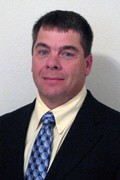Texas farmers and ranchers plant nearly 8 million acres of small grains annually, which include wheat (>5 million acres), oats (300 thousand acres), triticale (200 thousand acres), rye (70 thousand acres) and barley (30 thousand acres). Uses of small grains include grain production, winter pasture, hay, silage, wildlife food plots, and covercrops. Texas is the ninth largest wheat producing state in the nation, harvesting 2.3 million acres annually. Wheat has a cash value $355 million to farmers and generates $973 million for the economy. Additionally, small grain pasture plays a key to the Texas beef cattle industry with excellent forage potential and high quality.
Of the 5 plus million acres of wheat planted annually, about 50 percent is grazed out as a forage rather than harvesting for grain. Beef cattle weight gains of 2.0 to 2.5 pounds per head per day are common on this high quality forage. For dual-use wheat, livestock are removed in mid- to late winter and the crop produces a normal crop of grain.
Oat is the next largest small grain crop, with around 300,000 acres planted. In Texas, oats are primarily a forage crop, with less than 25 percent harvested for grain and the remainder grazed until growing terminates in the spring. Oats are preferred by many ranchers and wildlife enthusiasts as a winter pasture due to rapid and lush fall growth and excellent forage quality and palatability. Barley, rye, and triticale are primarily produced as winter forage crops, although a small but significant market exists for Texas barley as a feed grain.

Research Interests
- Developing a better understanding of the mechanisms that regulate seed development and associated end-use quality in wheat, related cereals
- Application of molecular genetic techniques with emphasis in molecular markers, to complement and advance breeding programs and to understand crop genetic architecture.
- Extension – Provide economically and environmentally sound recommendations to the Small Grain producers within the state of Texas
- Assist small grain variety testing programs across Texas and coordinate reporting of region variety trial reports including ‘Pick’ wheat varieties for each region.
Faculty and Staff
Amir Ibrahim
Associate Director& Chief Scientific Officer Texas A&M AgriLife Research
Small Grains
Related Sites of Interest
- Texas AgriLife Research
- Texas Foundation Seed Service
- Texas Wheat Producers Board
- Variety Testing Information
Learn More About Research Areas of Focus in Soil and Crop Sciences
In the realm of soil and crop sciences, research focuses on a myriad of critical areas that drive sustainable agricultural practices and global food security. Soil health and management take center stage, exploring ways to optimize soil fertility, structure, and nutrient cycling to enhance crop productivity. Genetic advancements in crop breeding and biotechnology are pursued to develop resilient varieties that withstand environmental stressors and ensure high yields. Precision agriculture, integrating technology and data analytics, aims to fine-tune farming practices, reducing resource waste and maximizing efficiency. The exploration of sustainable agroecosystems delves into the intricate relationships between crops, soil, and the environment, fostering environmentally friendly approaches. Such research not only informs farming practices but also contributes to vital policy discussions, shaping the future of agriculture in a rapidly changing world.






